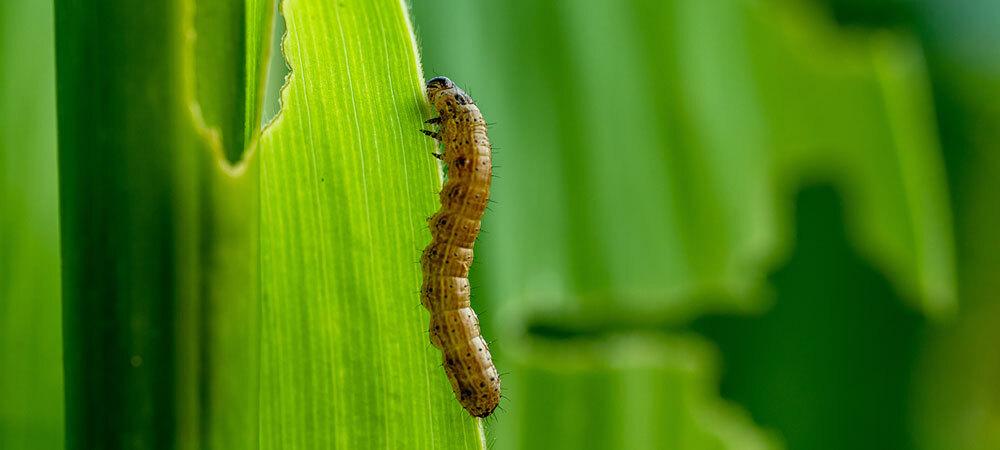Armyworm Outbreaks in Texas: What Fort Worth Homeowners Need to Know

If you're a homeowner in Fort Worth, Texas, you might have heard about the recent armyworm outbreak affecting our East Texas neighbors, including areas like Longview, Tyler, and Palestine. With reports of these pests causing significant damage to turfgrass in regions just east of us, it's crucial to stay informed about how armyworms might impact your lawn and what steps you can take to protect it.
What Are Armyworms?
Armyworms, particularly the fall armyworm (Spodoptera frugiperda), are insect larvae notorious for their rapid and severe damage to turfgrass. In East Texas, ranchers have reported sightings of armyworm caterpillars starting as early as late May in Panola County, with the infestation spreading to places like Longview and Tyler by early July.
What Do Armyworms Look Like?
Armyworms are larvae of various species of moths, and they are recognized by their distinctive appearance. Typically, they are smooth, cylindrical, and vary in color from light green to dark brown, often displaying a range of stripes and spots along their bodies. They usually have a characteristic "Y" or "V" shaped mark on the top of their heads.
As they grow, they can reach lengths of up to 1.5 inches and have a somewhat greasy or shiny appearance. Their bodies are segmented with small, bristle-like hairs and a pattern of stripes or spots that may help camouflage them against their surroundings.
How Do Armyworms Affect Your Lawn?
Armyworm larvae are small and initially cause minimal damage, making early infestations hard to detect. As they grow, their appetite increases dramatically. By the time they are over 3/4 inch long, they can consume 80% of their total food intake in just the final days of their larval stage. This rapid feeding can result in extensive damage to your lawn in a matter of days.
They primarily target bermudagrass, ryegrass, fescue, and bluegrass and feed primarily during the night and in cloudy weather. They often create a ragged look in the grass, which can be mistaken for drought stress. In residential areas, homeowners might first notice caterpillars crawling across walkways or porches.
In Fort Worth, if you notice signs of unusual browning or spots of dead grass in your lawn, especially if these areas seem to appear suddenly, you could be dealing with an armyworm infestation.
Understanding the Armyworm Life Cycle
The fall armyworm has a four-stage life cycle: egg, larva, pupa, and adult. The entire cycle from egg to adult takes about 3-4 weeks during the summer and longer in cooler weather. There are several generations per year, and the cycle typically ends with the cold weather in November.
The larvae go through several stages, or instars, before becoming full-grown. It’s during the later instars that they do the most damage, feeding heavily and quickly. They often have a whitish inverted "Y" mark between their eyes and three whitish stripes on their backs, which can help you identify them.
The adult moths are generally gray with white underwings and a wingspan of about 1½ inches. They lay up to 1,000 eggs at a time, often on the undersides of leaves or even on structures like fences and light posts, which can be found around your property.
Identify Armyworm Damage
The damage from armyworms often starts as small, transparent spots on grass blades and can quickly escalate to extensive areas of dead turf. This damage can mimic drought stress but usually progresses faster. As the infestation progresses, you may see larger patches of dead grass.
Look for caterpillars on walkways and porches. Additionally, keep an eye out for an increase in natural predators—wildlife and bird activity, such as cattle egrets, may indicate a severe infestation. If you spot these signs early, you can take action before the damage becomes severe.
How Armyworms Can Spread Quickly
Armyworms are notorious for their ability to spread rapidly, which can turn a minor issue into a major infestation in a short period. These pests can quickly move from one area to another, potentially affecting entire neighborhoods if not managed promptly.
Armyworms spread through several mechanisms:
- Migration: Adult moths are highly mobile and can fly long distances. They lay their eggs on various surfaces, including grass, trees, and structures, which facilitates the rapid spread of larvae to new areas.
- Feeding Behavior: As armyworm larvae mature, they consume a large amount of plant material in a short time. This feeding frenzy can severely damage lawns and pastures, making them more noticeable and prompting the larvae to migrate to new areas in search of fresh food.
- Environmental Conditions: The recent heavy rains and favorable conditions have enhanced their development and expansion. Armyworms thrive in moist environments, which can lead to rapid population growth and movement.
Preventing and Managing an Armyworm Infestation
If you’ve noticed or heard about an armyworm infestation in your neighborhood or surrounding areas, it’s crucial to be extra vigilant. Here’s why:
- Monitor Your Lawn Regularly: Check for signs of armyworm larvae, especially during early morning and late evening. Look for the characteristic damage and the larvae themselves.
- Early Detection is Key: Armyworm infestations can spread quickly from one lawn to another. By being aware of nearby infestations, you can monitor your own property more closely for early signs of trouble.
- Proactive Measures: If you know of an infestation nearby, increase your scouting efforts. Look for the characteristic signs of damage and caterpillars, and consider implementing preventive treatments even before you see significant damage.
- Use Appropriate Treatments: If you identify an armyworm infestation, there are several treatments available, including insecticides specifically designed for armyworms. For lawns in Fort Worth, options include:
- Halofenozide (Mach® 2)
- Bifenthrin (Talstar®)
- Cyfluthrin (Tempo®)
- Carbaryl (Sevin®)
- Permethrin (Various brands)
- Spinosad (Conserve®)
- Communicate with Neighbors: Share information with your neighbors about the risks of armyworms and the importance of early detection. A collective effort in monitoring and managing these pests can help prevent widespread damage.
If there’s an infestation in your area, it is best to consult your local lawn care professionals, as they can provide ongoing monitoring, targeted advice, and effective armyworm treatments to protect your lawn.
Stay Informed
Given the recent reports from East Texas, it’s essential to stay vigilant in Fort Worth. Armyworm outbreaks can spread quickly, and early intervention can make a significant difference in managing these pests effectively. By keeping an eye on your lawn and taking proactive steps, you can protect your turf and ensure it remains healthy and vibrant.
If you have any concerns or need assistance with managing an armyworm infestation, don't hesitate to contact a local lawn care specialist in Fort Worth at Gro Lawn. Protect your lawn and enjoy a beautiful, healthy yard all year long!
